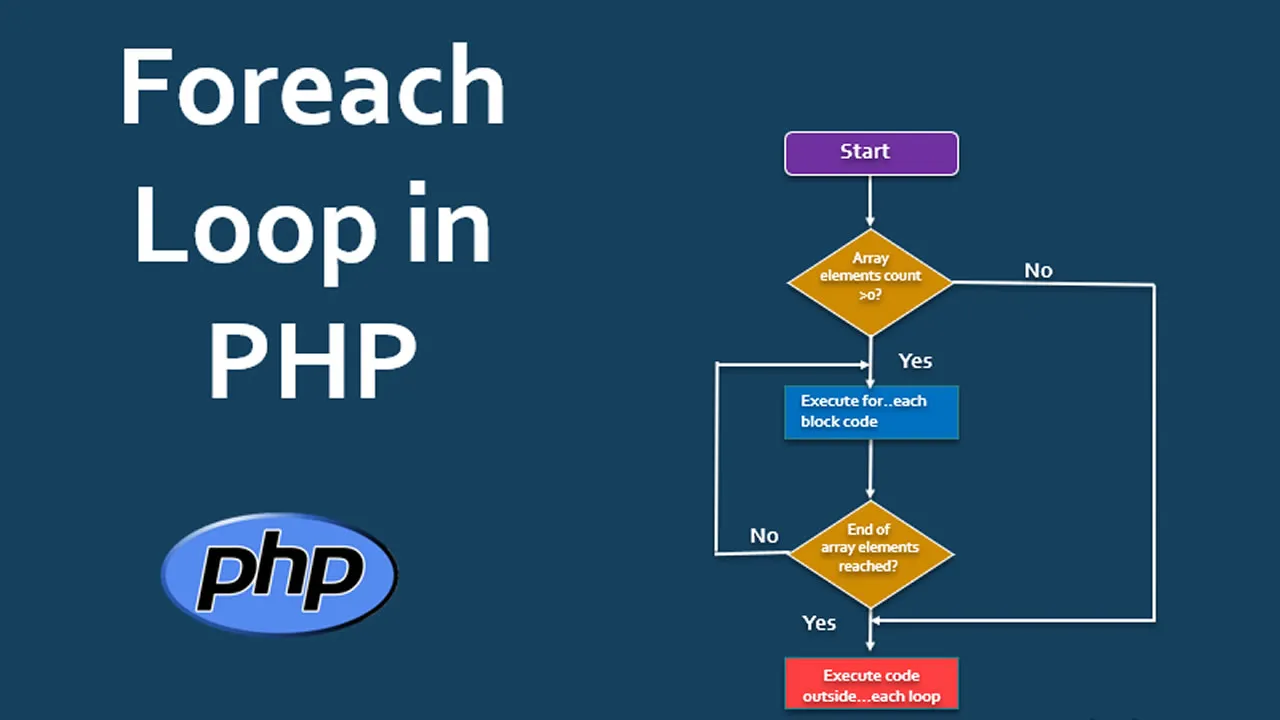PHP foreach Loop - Explained with Examples
Unleash the potential of PHP foreach loop with practical examples. Master seamless iteration through arrays, enhancing code efficiency in web development.
The foreach loop - Loops through a block of code for each element in an array or each property in an object.
The foreach Loop on Arrays
The most common use of the foreach loop, is to loop through the items of an array.
Example
Loop through the items of an indexed array:
$colors = array("red", "green", "blue", "yellow");
foreach ($colors as $x) {
echo "$x <br>";
}
For every loop iteration, the value of the current array element is assigned to the variabe $x. The iteration continues until it reaches the last array element.
Keys and Values
The array above is an indexed array, where the first item has the key 0, the second has the key 1, and so on.
Associative arrays are different, associative arrays use named keys that you assign to them, and when looping through associative arrays, you might want to keep the key as well as the value.
This can be done by specifying both the key and value in the foreach defintition, like this:
Example
Print both the key and the value from the $members array:
$members = array("Peter"=>"35", "Ben"=>"37", "Joe"=>"43");
foreach ($members as $x => $y) {
echo "$x : $y <br>";
}
The foreach Loop on Objects
The foreach loop can also be used to loop through properties of an object:
Example
Print the property names and values of the $myCar object:
class Car {
public $color;
public $model;
public function __construct($color, $model) {
$this->color = $color;
$this->model = $model;
}
}
$myCar = new Car("red", "Volvo");
foreach ($myCar as $x => $y) {
echo "$x: $y <br>";
}
The break Statement
With the break statement we can stop the loop even if it has not reached the end:
Example
Stop the loop if $x is "blue":
$colors = array("red", "green", "blue", "yellow");
foreach ($colors as $x) {
if ($x == "blue") break;
echo "$x <br>";
}
The continue Statement
With the continue statement we can stop the current iteration, and continue with the next:
Example
Stop, and jump to the next iteration if $x is "blue":
$colors = array("red", "green", "blue", "yellow");
foreach ($colors as $x) {
if ($x == "blue") continue;
echo "$x <br>";
}
Foreach Byref
When looping through the array items, any changes done to the array item will, by default, NOT affect the original array:
Example
By default, changing an array item will not affect the original array:
$colors = array("red", "green", "blue", "yellow");
foreach ($colors as $x) {
if ($x == "blue") $x = "pink";
}
var_dump($colors);
BUT, by using the & character in the foreach declaration, the array item is assigned by reference, which results in any changes done to the array item will also be done to the original array:
Example
By assigning the array items by reference, changes will affect the original array:
$colors = array("red", "green", "blue", "yellow");
foreach ($colors as &$x) {
if ($x == "blue") $x = "pink";
}
var_dump($colors);
Alternative Syntax
The foreach loop syntax can also be written with the endforeach statement like this
Example
Loop through the items of an indexed array:
$colors = array("red", "green", "blue", "yellow");
foreach ($colors as $x) :
echo "$x <br>";
endforeach;#php
